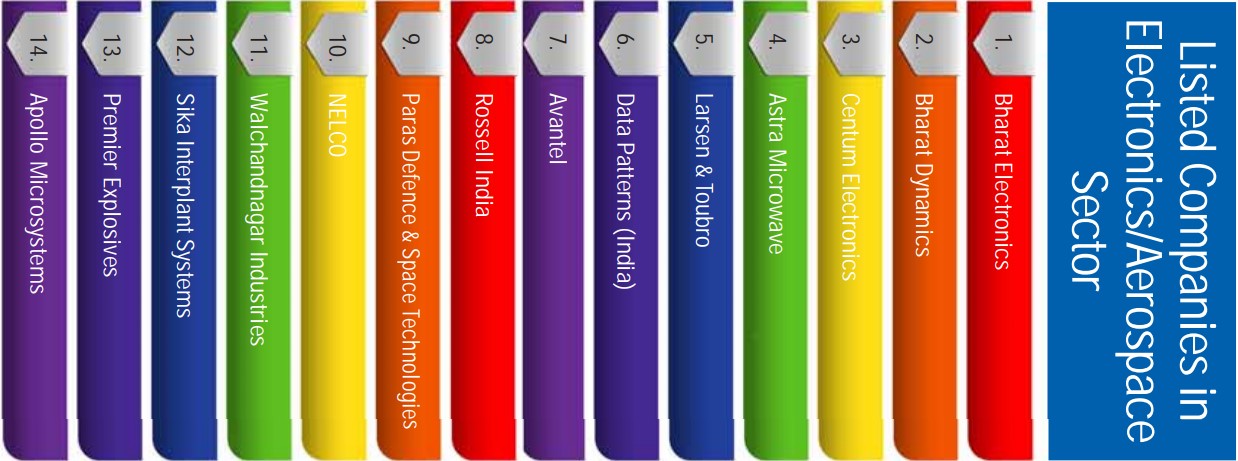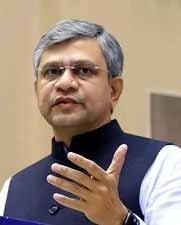Want to Subscribe?
Read Corporate India and add to your Business Intelligence

![]() Unlock Unlimited Access
Unlock Unlimited Access

Published: Jun 30, 2022
Updated: Jun 30, 2022

The Indian electronics sector is the latest kid on the growth block, boosted by the Centre’s regulatory and incentive support and encouraged by government policies like ‘Make in India’ and ‘Digital India’.
The sector’s growth prospects are further underlined by current low domestic market penetration, coupled with rising incomes, better all-round infrastructure and expectations of a post-Covid higher GDP growth.
The main driver, needless to say, will be the Centre’s mammoth Rs 2.3 lakh crore policy push which aims at 30 per cent growth for the electronics sector by next year. In fact, the Centre has already drawn up a roadmap for a $ 300 billion growth target by 2026, covering the requirements of domestic consumers as well as the strategic requirements of the country’s defence sector.
The $ 75 billion Indian electronics industry, which has seen sweeping changes during the last two decades, has by now emerged as one of the fastest growing in the sector globally, if the Indian government’s plans for further growth are any indication. In fact, the size of the industry is estimated to grow to around $ 300 billion by 2026.
The sweeping changes that have been taking place in recent decades have primarily been in the product domain (across technologies, formats and design). The evolution of the retail environment has been fascinating – from traditional bania shops to large-format specialised stores and ecommerce, along with an evolving regulatory landscape. The requirements of both consumers and business have evolved, leading to a demand for more innovative products. The industry’s ecosystem has undergone drastic changes so as to keep pace with the changing demand patterns. Supply chains are now far more complex, diverse and optimised to meet the new industry structure. At present, a significant share of Indian demand is meet by imports. But the Indian electronics industry is entering an era where the manufacture of several components will be indigenised through regulatory support and incentivised production from the Government of India.
The long-term growth prospects for the industry are all the more promising, primarily because market penetration is still very low — currently standing at single digits for some categories like LED products and industrial electronics. Again, the positive outlook of a higher GDP growth rate once the pandemic’s impact is over, rising disposable incomes, improving physical and social infrastructure (availability of electricity and water), better logistics (facilitated by improved road connectivity), the ambitious digital India programme and the expansion of retail will provide an additional impetus. It is this promise of sustainable long-term growth that has attracted several international brands to India, many of whom have set up manufacturing facilities here.
At the same time ,to give a boost to the indigenous industry, the government of India has devised an ambitious Rs 2.3 lakh crore policy push under which the electronics manufacturing industry is likely to register at least 30 per cent growth in the next fiscal.
n fact, the Union Ministry of Electronics and Information Technology (MEITY) has devised a roadmap to achieve the $ 300 billion mark in electronics manufacturing and exports by 2026, which will give a big boost to consumer electronics, mobile phones, electric vehicles and LED lighting. Of course, these growth areas also include ‘strategic electronics’ – radars, security systems, terahertz wireless systems, micro and millimeter-wave sensors and electromagnetic wave applications — as well as ‘defence electronics’ – components used in weapon systems, communication, command, control, computers, intelligence, surveillance, reconnaissance, secured networks, aerial, submarine and terrestrial platforms, among others
Importantly, the government expects the ‘strategic electronics’ segment to grow from $ 4 billion in 2020-21 to $ 12 billion by 2025-26 and the ‘defence electronics’ sector to reach $ 60 billion, with $ 40 billion coming from products and $ 20 billion from sub-assemblies and components.
Similarly, the Indian electronics system design & manufacturing (ESDM) sector, valued at $ 105 billion in FY20, is expected to reach to $ 220 billion by 2025, expanding at 16.1% CAGR between 2020 and 2025. Of this, the electronics system market is expected to grow 2x from $ 81 billion in 2020 to $ 160 billion by 2025. Further, the electronics design market is also expected to grow from $ 24 billion in 2020 to $ 60 billion by 2025.
The Government of India is focusing on manufacturing electronics hardware within the country, which seems to be the conceptual origin for both the ‘Make in India’ and the ‘Digital India’ programmes. These initiatives encourage domestic manufacturing and exports across the electronics system design and manufacturing (ESDM) value chain, aiming to achieve a market size of $ 251 billion by 2023.
Besides ‘Make in India’ and ‘Digital India’, the government has devised several policies specific to the electronics sector which include the National Policy of Electronics, ‘Net Zero’ imports in electronics and ‘Zero Defect, Zero Effect’.
The government’s flagship programmes such as ‘Smart Cities’ and ‘Digital India’ are also boosting demand for electronics. In order to give a further boost to the industry, the government has announced the following additional schemes: Production Linked Incentives (PLI), and Scheme for the Promotion of Manufacturing of Components and Semiconductors.
The MEITY has proposed a PLI scheme of about Rs 22,000 crore to promote wearables as well as enhance incentives for IT hardware manufacturers in the next financial year, as it aims to increase electronics exports from India by 50 per cent. According to industry body ICEA, whose members include Apple, Foxconn, Wistron, Lava and Vivo, mobile phone production in the country peaked at Rs 2.2 lakh crore in 2020-21 and is expected to cross Rs 2.75 lakh crore this year. Chinese players like Xiaomi and BBK Electronics group firms Vivo, Oppo, Realme and Iqoo dominate the smartphone segment with about 70 per cent marketshare.
“Chinese companies are only focusing on catering to the Indian market requirements. Therefore, they have not participated in the PLI scheme. Indian companies are expected to do well and become global champions,” an MEITY official says. Asked about the contribution of Indian companies in electronics production, India Cellular and Electronics Association Chairman Pankaj Mohindroo says the share has come down from 47 per cent by volume in 2016 to under 8 per cent now.
“The government has already introduced a significant measure in PLI wherein the under $ 200 (about Rs 15,000) segment is reserved for Indian companies. A slew of other support measures is also being planned and we are sure that not only will Indian companies have a share of the domestic market but they will also emerge as global champions, at least in the entry level segment,” Mohindroo says
The government is expecting an investment of Rs 34,090 crore under the PLI scheme for large-scale electronics manufacturing, mainly mobile phones and electronics components, by 2025, Parliament was informed recently.
The government has approved proposals of 20 companies under the Scheme for Promotion of Manufacturing of Electronic Components and Semiconductors (SPECS), including that of Tata Electronics, till January 27.
“Around Rs 20,000 crore is expected to come from electronics components and semiconductor companies and Rs 14,090 crore from 32 proposals approved under the PLI scheme for large scale electronics manufacturing,” says Minister of State for Electronics and IT Rajeev Chandrasekhar.
Apple’s leading contract manufacturers Foxconn, Pegatron and Wistron, South Korean electronics major Samsung, Indian companies Lava, Jio’s Neolync, Optiemus Electronics, etc, have participated in the PLI scheme for large scale electronics manufacturing.
“In the aforementioned PLI schemes for large-scale electronics manufacturing and IT hardware, the amount of investment expected to be brought in by the approved applicants is Rs 14,090 crore. The total employment (both direct and indirect) expected to be generated during the tenure of the schemes is about 8.57 lakh,” Chandrasekhar says.
The Ministry of Electronics and IT has approved 16 proposals under the second round of PLI for large- scale manufacturing of electronics components, which includes Vishay Components, Deki Electronics, Continental Device India and Salcomp Technologies.
MEITY has approved 14 proposals under PLI for IT hardware, which includes Dell, Foxconn subsidiary Rising Stars, Flextronics, Dixon Technologies, Panache Digilife, Netweb Technologies and Smile Electronics.
“Under the SPECS scheme, investment to the tune of Rs 20,000 crore is expected. The total employment potential (both direct and indirect) of the scheme is approximately 6 lakh,” says Mr Chandrasekhar.
Under the Modified Special Incentive Package Scheme as of Mayend this year, 320 applications with a proposed investment of Rs 89,232 crore were under consideration with MEITY. Out of this, 314 applications with investment proposals of Rs 86,824 crore have been approved. Four other applications with investment proposals of Rs 315 crore have been recommended by the appraisal committee for approval while the remaining two applications worth Rs 2,093 crore are under appraisal. Incentives of Rs 1,774.47 crore have been disbursed to 114 applicants. An investment proposal of Rs 596 crore from Bosch Automotive Electronics Pvt Ltd has also been cleared recently.
In order to make India a pioneering force in the global electronics manufacturing sector, the government is going all out to attract more investments in the sector for achieving its ambitious target of $ 300 billion in sustainable electronics manufacturing and exports by 2026.
Rapid technology advancements and newer products with upgraded technology have led to shorter life cycles for electronics products. Also, changing customer attitudes and consumer-to-consumer websites, such as Olx and Quikr, have made it easier for customers to replace their existing electronic devices with newer products.
Increased demand for high-speed data has also contributed towards the burgeoning demand for high-end smartphones. This rising preference for advanced technology products has driven rapid innovation in consumer electronics. Emerging technologies such as IoT and AI, and the introduction of robotics and analytics in the industrial and strategic electronics segment have all led to the overall development of various electronic products, which has given a boost to local demand.
The Indian market growth has predominantly seen consumption-driven growth in the last several years. However, the government's support for the industry has been strong, with numerous conducive policies. Growth in the electronics manufacturing industry will establish India among the leading economies of the world. With this goal, it is expected that the growth momentum will be sustained over the coming decade.
As per a report published by the World Economic Forum, "The vision for the future of consumption in India is anchored in the growth of the upper middle-income and high-income segments, which will grow from being one in four households today to one in two households by 2030."

These new consumers will drive demand for consumer appliances such as air conditioners and washing machines. These product categories are also the cornerstone of the boom in consumer electronics sales. While the growth is predominantly consumerdriven, the industry is also expected to drive innovation to increase the share of electronics across several applications. In the automotive industry, the government has released a draft notification to ban all internal combustion engine powered two-wheelers and three-wheelers by 2023 and 2025 respectively.
The proposed change has created the momentum to attract EV companies (manufacturers and their suppliers) to explore investments in Indian manufacturing. Similarly, a newer technology like 5G is likely to drive growth and consumption of the Indian electronics industry.
With future investments in semiconductors, electronics components and ICs, India is looking set to welcome another wave of growth in the electronics sector. This transition will be fuelled by a large young population, increasing research initiatives and favourable investment policies. The impetus provided by the government will give further encouragement to domestic manufacturing as India prepares to be the next global hub for electronics production and exports.
The Indian aerospace industry has started flying high and has emerged as one of the fastest growing sectors in the country, and is reckoned now as the third largest aerospace industry in the world. If the significant policy reforms initiated by the present government are efficiently implemented, the Indian aerospace and defence market is projected to reach $ 70 billion by 2030, driven by the burgeoning demand for advanced infrastructure and government thrust.
The aerospace industry in the country is growing significantly with the increasing activities of both the defence and civil aviation sectors and the growing demand for large aircraft from Indian carriers such as Spicejet and Indigo, as well as the focus on Powered by Hour Contracts (PBH) by many of India’s aerospace services and manufacturers. Likewise, as India’s defence capital expenditure spending is continuously growing, there are also many opportunities in defence aerospace.
The Narendra Modi government has already declared its strong intent in eyeing a share in the global satellite launch market and has secured four dedicated launch service contracts from foreign customers to onboard their satellites on ISRO’s SSLV, PSLV and GSLV-Mk III.
It is worth mentioning here that almost 20 countries have launched their space agencies in the past two decades. They would look to India for launch rideshare, satellite operations, downstream services, sub-components, etc. Undoubtedly, this augurs well for the country, including private sector players in these domains.
After the recent inauguration of the headquarters of the Indian National Space Promotion and Authorisation Centre (IN-SPACe) at Ahmedabad, Prime Minister Modi called for greater participation of the private sector in the country’s space programme to enhance India’s share in the global space industry. Mr Modi said, “Today, the global space industry is worth $ 400 billion and is set to touch $ 1 trillion by 2040. Our participation is just two per cent in this. We have to increase our share and the private sector has a big role to play here.” According to Mr Modi, “IN-SPACe will act as a single- window independent nodal agency to address the needs of the private sector in space programmes. Fuelled by private entrepreneurship, India has strong possibilities to emerge as a big player in space tourism and space diplomacy.”
He reiterated that “we have limitless opportunities, but they can’t be realised with limited efforts. I assure you, the reforms in the space sector will continue unconstrained in the future and ISRO’s space missions will combine with the passionate private sector. ISRO will also facilitate start-ups and private entities by transfer of technology, while providing access to its resources for the collective good. So far, IN-SPACe has received 67 proposals in the areas of launch vehicles, satellites, space applications, ground systems and research from entities across industries, MSMEs/start-ups, academia, NGOs, industrial associations and individuals.”
As far as the aerospace industry is concerned, India has a competitive advantage over other countries in terms of lowcost production of components. With low labour costs, availability of resources and supportive government regulations, the country provides huge growth opportunities in this sector. The sector, backed by the government’s ‘Make in India’ policies, encourages global players to invest in and optimise the country’s manufacturing process.
Further, India is considered a strategic geographical location and a significant international market with high aircraft demand, technical skills and competitive labour costs by Boeing, Airbus and other leading OEMs. To meet the needs of Tier 1 suppliers and build an aerospace industry ecosystem in the country, manufacturers worldwide are partnering with Indian suppliers and small-medium enterprises. The active participation of global players is expected to further boost the growth of the aerospace industry in India.
Under its Aerospace and Defence policy, which aims to establish Karnataka as the preferred investment destination for aerospace and defence manufacturing, the state will develop five aerospace and defence hu
While announcing that the Aerospace and Defence (A&D) Policy (2022-27) would be ready by the three-day Global Investors Meet (GIM) beginning on November 2, Murugesh Nirani, the state Industries Minister, added that the policy aims to attract investments to the tune of Rs 60,000 crore in the aerospace and defence sector over a five-year period.
Under the A&D policy, which aims to establish Karnataka as the preferred investment destination for aerospace and defence manufacturing, the state will develop five aerospace and defence hubs in Bengaluru, Belagavi, Mysuru, Tumkur and Chamarajanagar.
“The policy promotes A&D parks which will have comprehensive infrastructure facilities, including roads, captive power generation, water supply, facilities for research and development (R&D), common training facilities, common warehouse facilities, plug-n-play facilities, manufacturing complexes and built-in space for all precision manufacturing companies. Government ITIs will provide courses pertaining to the aerospace and defence sector to create a strong pool of talent for companies setting up their units within the parks,” Nirani said.

One of the major features of the policy is to create additional employment opportunities for more than 70,000 persons. The policy aims to develop the state as a manufacturing hub, including maintenance, repair and operations (MRO) facilities and space applications for both the Indian market and exports, he said. Mr Nirani, who has piloted the policy, said India’s current market size of approximately $7 billion is expected to grow at a compounded annual growth rate (CAGR) of 7.5 per cent to reach $15 billion by 2032, presenting a significant opportunity for defence electronics players to capitalise upon.
“Electronics are the primary capability in modern warfare systems. Karnataka contributes a major share of 40 per cent of defence electronics systems/products. The growth in demand for electronics in the Indian aerospace and defence sector is driven by modernisation of weapon platforms, introduction of state-of-art weapons, impact of indigenization and the ‘Make in India’ initiative. To give a further boost, the A&D policy offers land and financial incentives packages for space, defence and aerospace manufacturers and other sub-sectors,” he said.
ASHWINI VAISHNAW, IT MINISTER
IT Minister Ashwini Vaishnaw has urged states to take a serious look at the huge opportunities in electronics manufacturing space, where India has proven its mettle as an ‘important trusted partner’ globally. He is confident that having dedicated zones in industrial corridors for electronics manufacturing will yield rich benefits, including driving massive job creation in the sector.
Mentioning India’s success in electronics manufacturing and citing the example of how the production lines of, say, iPhone, spur employment opportunities, the Minister has exhorted states to move swiftly to tap the “great opportunities” in the sector.
Speaking at the first meeting of the Apex Monitoring Authority for the National Industrial Corridor Development Programme recently, Mr Vaishnaw, who is also Minister for Communications, proposed that a working group between the Commerce & Industry Ministry and the Telecom Department be formed.
ccording to him, such a working group will help in addressing crucial aspects such as optical fibre ducts and space for 5G telecom towers in a “scientific and methodical way” to ensure robust connectivity in these industrial zones or nodes.
“We have a great opportunity as India is being seen as very important trusted partner and the success of electronics manufacturing in the last eight years has been watched and experienced by the world ... from practically nowhere, we have reached a $ 76 billion industry in electronics manufacturing today, and this is having a double-digit growth,” he said.
Mr Vaishnaw also urged state governments to take a serious look at opportunities which are coming, saying, “If we can have dedicated nodes in these industrial corridors for electronics manufacturing, that will also be a great opportunity.” The resultant benefits would not only be in terms of scale of production, but even in job creatio
“It is highly employment-intensive. One line of iPhone normally provides employment to about 5,000 people. That is a huge number. So even if we can shift 10-15 lines in the coming couple of years, we will have huge employment generation in this sector,” he said.


February 15, 2025 - First Issue

Industry Review

Want to Subscribe?
Read Corporate India and add to your Business Intelligence

![]() Unlock Unlimited Access
Unlock Unlimited Access
Lighter Vein

Popular Stories
Archives
